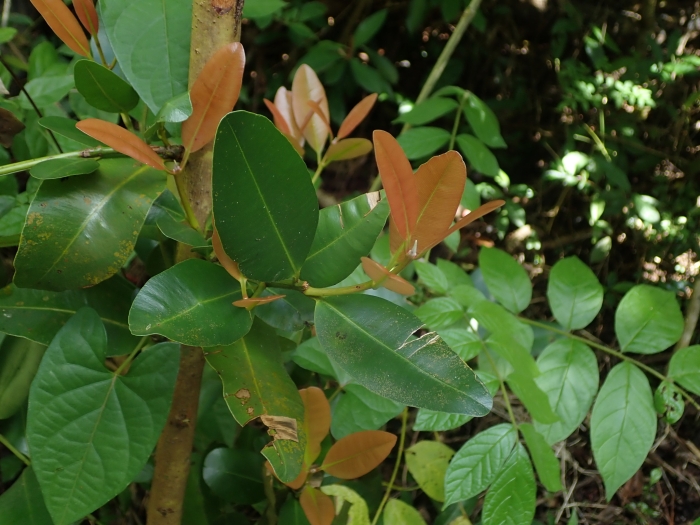Antilles Beauty Leaf
(Calophyllum antillanum)
Antilles Beauty Leaf (Calophyllum antillanum)
/
/

Daniel Cahen
CC BY 4.0
Image By:
Daniel Cahen
Recorded By:
Copyright:
CC BY 4.0
Copyright Notice:
Photo by: Daniel Cahen | License Type: CC BY 4.0 | License URL: http://creativecommons.org/licenses/by/4.0/ | Rights Holder: Daniel Cahen | Publisher: iNaturalist | Date Created: 2020-02-12T19:20:37-08:00 |























Estimated Native Range
Summary
Calophyllum antillanum, commonly known as Antilles beauty leaf or West Indian laurel, is an evergreen tree that is native to the Caribbean region. It thrives in a variety of habitats including coastal forests, lowland wet forests, and limestone hills. This species is found in countries such as Antigua and Barbuda, Barbados, Cuba, Dominica, Grenada, Guadeloupe, Hispaniola, Jamaica, Martinique, Montserrat, Puerto Rico, St. Lucia, St. Vincent and the Grenadines, Trinidad and Tobago, and the U.S. Virgin Islands. It has been introduced to Florida and Hawaii, where it can become invasive. Typically, the tree reaches a height of 20-30 feet (6-9 meters) with a broad, dense canopy. The leaves are glossy and leathery, and the tree produces small, white, fragrant flowers followed by round, green fruits.
The wood of Calophyllum antillanum is highly valued for its durability and is used in construction, furniture making, and boat building. Its dense foliage and rapid growth make it suitable for shade planting, windbreaks, and erosion control. The tree requires full sun to partial shade, moist well-drained soils, and can tolerate a range of soil types. It is drought-tolerant once established. The latex from the trunk has medicinal uses, and the fruits are sometimes used as hog feed. Gardeners should be cautious about planting it outside its native range due to its potential invasiveness.CC BY-SA 4.0
The wood of Calophyllum antillanum is highly valued for its durability and is used in construction, furniture making, and boat building. Its dense foliage and rapid growth make it suitable for shade planting, windbreaks, and erosion control. The tree requires full sun to partial shade, moist well-drained soils, and can tolerate a range of soil types. It is drought-tolerant once established. The latex from the trunk has medicinal uses, and the fruits are sometimes used as hog feed. Gardeners should be cautious about planting it outside its native range due to its potential invasiveness.CC BY-SA 4.0
Plant Description
- Plant Type: Tree
- Height: 20-40 feet
- Width: 20-30 feet
- Growth Rate: Slow
- Flower Color: White
- Flowering Season: Spring
- Leaf Retention: Evergreen
Growth Requirements
- Sun: Full Sun, Part Shade
- Water: Medium
- Drainage: Fast, Medium
Common Uses
Border Plant, Butterfly Garden, Low Maintenance, Showy Flowers
Natural Habitat
Coastal forests, lowland wet forests, and limestone hills in the Caribbean region
Other Names
Common Names: West Indian Laurel , Antilles Calophyllum , Alexandrian Laurel , Baria , Bois De Charromage , Bois Marie , Antilles Alexandrian Laurel , Dalemarie
Scientific Names: Calophyllum antillanum , Calophyllum brasiliense var. antillanum , Calophyllum brasiliense var. antillarum , Calophyllum jacquinii
GBIF Accepted Name: